Klein Tools 60552 Handleiding
Bekijk gratis de handleiding van Klein Tools 60552 (5 pagina’s), behorend tot de categorie Niet gecategoriseerd. Deze gids werd als nuttig beoordeeld door 97 mensen en kreeg gemiddeld 4.4 sterren uit 49 reviews. Heb je een vraag over Klein Tools 60552 of wil je andere gebruikers van dit product iets vragen? Stel een vraag
Pagina 1/5

60552
(M/L - M/G)
60553
(S/M - P/M)
FIG. 1
FIG. 4
FIG. 3
FIG. 6
BASED ON: 1390554 Rev 05/23 A
10.016.0638.00.AA
8
10
9
ENGLISH
FEATURES
1.
Lower Strap
2.
Upper Strap
3.
Lower Strap Clip End (×2)
4.
Lower Strap Buckle (×2)
5.
Upper Strap Clip End (×2)
6.
Upper Strap Buckle (×2)
7.
Bottom Tab
8.
Exhalation Valve
9.
Face Piece
10.
Inhalation Valves (×2)
11.
Respirator Body
12.
Grille
13.
1/4-Turn Latches (×2)
14.
Sample Port Plug
FIG. 2
FIG. 5
12
2
6
4
7
1
11
13
5
3
14
CARACTERÍSTICAS
1.
Correa inferior
2.
Correa superior
3.
Extremo del clip de la correa inferior (×2)
4.
Hebilla de la correa inferior (×2)
5.
Extremo del clip de la correa superior (×2)
6.
Hebilla de la correa superior (×2)
7.
Pestaña inferior
8.
Válvula de exhalación
9.
Pieza facial
10.
Válvulas de inhalación (×2)
11.
Cuerpo del respirador
12.
Rejilla
13.
Bloqueos de 1/4 de vuelta (×2)
14.
Tapón del puerto de muestras
ESPAÑOL
CARACTÉRISTIQUES
1.
Courroie inférieure
2.
Courroie supérieure
3.
Extrémité de la courroie inférieure (×2)
4.
Boucle de la courroie inférieure (×2)
5.
Extrémité de la courroie supérieure (×2)
6.
Boucle de la courroie supérieure (×2)
7.
Languette inférieure
8.
Soupape d’expiration
9.
Masque
10.
Soupape d’inhalation (×2)
11.
Corps du respirateur
12.
Grille
13.
Loquet à quart de tour (×2)
14.
Orifice pour prise d’échantillon
FRANÇAIS
P100 HALF-MASK RESPIRATOR INSTRUCTIONS
INSTRUCCIONES DEL RESPIRADOR DE MEDIA
CARA P100
INSTRUCTIONS POUR LE DEMI-MASQUE
RESPIRATOIREP100

GENERAL SPECIFICATIONS
STANDARDS
The P100 Half Mask Respirator 60552 / 60553 is approved as a half-mask respirator in accordance with NIOSH Standards
42 CFR Part 84. The P100 filter 60554 is part of the approved assembly and only when the above items are used togethe
is the device approved for occupational applications
APPLICATIONS
The P100 half-mask respirator together with P100 filters give protection against all particulate aerosols; including soli
and liquid particules such as dust, metal fumes, and oil mist. The protection provided by classification P100 also cover
the protection provided by lower class filters. Guidelines for the selection and use may vary between countries, alway
check prior to use to ensure that your selection for the intended application meets national requirement
WARNINGS
To ensure safe operations, follow these instructions. Failure to observe these warnings instructions may result in
sickness or death.
•
NOT FOR USE
in atmospheres containing less than 19.5% oxygen
•
NOT FOR USE
in atmospheres immediately dangerous to life or health
•
DO NOT
exceed maximum use concentrations established by regulatory standards. Failure to properly use and
maintain this product could result in injury or death
•
Follow the manufacturers Users Instructions for changing cartridges, canisters and/or filters
•
All approved respirators shall be selected, fitted, used and maintained in accordance with MHSA, OSHA and othe
applicable regulations
•
NEVER
substitute, modify, add or omit parts. Use only exact replacement parts in the configuration as specified by th
manufacturer
•
Refer to user’s instructions and/or maintenance manuals for information on use and maintenance of these respirator
•
NIOSH does not evaluate respirators for use as surgical masks
•
ALWAYS
conduct a pressure face fit check prior to each use. If the check fails the respirator may be faulty or require
replacement depending on age, frequency of use and replacement of filters
The use of this respirator presupposes exact knowledge of the instructions for use, applicable health and safet
standards, guidelines for selection and use, and appropriate training in matters of personal respiratory protection
Leave the contaminated area immediately if
•
Dizziness or distress is experienced
•
You taste or smell contaminants or irritation occurs
•
Breathing becomes difficult
•
A defect is discovered in the respirator
Store respirator as per instructions
Before occupational use of this respirator a written respiratory protection program must be implemented meeting a
the local government requirements. In the United States employers must comply with OSHA 29 CFR 1910.134 whic
includes medical evaluation, training, and fit testing
FITTING
The respirator must be inspected by the wearer before and after each use to ensure that it is in good working conditio
and valves and filters are seated correctly. Remove eyewear (if worn). If facial hair goes beyond the border of the
respirator, an effective seal will not be achieved, and a powered respirator will be required
NOTE:
OSHA regulations
require that all users be fit tested prior to use either qualitatively or quantitatively.
1.
Hold the respirator with one hand and the Lower Strap
1
with the other hand, put the Headband over your head and
allow to rest around the neck (FIG. 1)
2.
Place the respirator over mouth and nose then lift the Upper Strap
2
over the crown of your head to support the
respirator. Ensure that the straps are not twisted and are sitting flat against the head (FIG. 2)
3.
Grip Lower Strap Clip End(s)
3
at the Lower Strap Buckle(s)
4
and gently pull towards back of head to tighten (FIG. 3)
4.
Grip Upper Strap Clip Ends
5
at the Upper Strap Buckle(s)
6
, and gently pull towards back of head to tighten. Check
respirator is seated correctly and tight enough to prevent air leakage between respirator and face (FIG. 4)
5.
Clip all Strap Clip Ends
3
5
onto the Upper and Lower Straps
1
,
2
so that none of the strap ends are hanging
loosely (FIG. 5).
6.
POSITIVE PRESSURE FACE FIT CHECK:
Grab the Bottom Tab
7
and push in to seal off the exhalation valve
8
.
Next, exhale moderately. If the face piece
9
bulges slightly and no air leaks between the face and the Face Piec
9
are detected, a proper fit is achieved. If air leakage is detected, reposition the respirator on the face and/or readjust th
Straps
1
,
2
to eliminate the leakage (FIG. 6)
SAMPLE PORT
The Sample Port can be used to perform non-destructive quantitative fit-testing. Ensure the Sample Port Plug
14
is fully
inserted and seated when using this respirator
PERIODIC AND DEEP CLEANING
ALWAYS REMOVE FILTERS PRIOR TO ANY CLEANING ACTIVITY - DO NOT WASH FILTERS.
Both periodic and deep cleaning should be logged as part of the respirator routine
PERIODIC CLEANING:
Clean
Face Piece
9
assembly periodically with a soft cloth and mild soapy water (no solvents)
DEEP CLEANING:
When necessary, deep-clean per the following procedure
1.
Disassemble Respirator Body by rotating the 1/4-Turn Latches
13
counterclockwise and removing the Grille
12
,
filters, and Head Straps
,
2
from the Respirator Body
11
(FIG. 7)
NOTE: Valve bodies
8
,
10
are integral to the
respirator body and remain in place.
ma
i
1
2.
Immerse Respirator Body
11
and Grille
12
in warm water and scrub with soft brush. Neutral detergent may be used i
necessary.
Respirator Body
11
can also be soaked in a disinfectant for a short period of time
3.
All parts should then be rinsed in clean, warm water and allowed to air dry in a non-contaminated atmosphere
4.
Reassemble straps through the strap tabs in the Grille
12
, Replace filters with new (Cat. No. 60554) and reattach the
Grille
12
to the Respirator Body using the 1/4-Turn Latches
13
STORAGE
The respirator should be stored out of direct sunlight, away from sources of high temperature, and in an uncontaminated
environment. Spare filters should also be stored in a cool dry atmosphere at a temperature of between 14°F (-10°C) and
104°F (40°C). Storage under conditions other than those specified may affect shelf life. Respirator must be discarded
when it reaches its expiration date printed on exterior of packaging
FILTER INSPECTION & REPLACEMENT
Inspect respirator and filter before and after use for damage such as tears or cracks and immediately replace o
discard as required. Filters should be changed once a month or more frequently if you find a resistance to breathing
A maintenance record should be kept of these filter changes. Filter fitting instructions are supplied with replacemen
filters (Refer to instructions with Klein Tools Cat. No. 60554 or on www.kleintools.com for full details). Each filter pack is
individually marked with the month and year of their expiration date. Shelf life is 5 years for P100 filters. Filters must b
discarded when they reach their Expiration date
S – SPECIAL OR CRITICAL USER INSTRUCTIONS
These P100 Half-Mask Respirator(s), sizes S/M (P/N: 60553) or M/L (P/N:60552) used with filter (P/N:
60554), have been manufactured by Air Filtration Solutions for Klein Tools under TC-84A-9447.
WARRANTY
www.kleintools.com/warranty
CUSTOMER SERVICE
KLEIN TOOLS, INC.
450 Bond Street Lincolnshire, IL 60069 1-800-553-4676
customerservice@kleintools.com
www.kleintools.com
Read instructions
before using
104°F
(40°C)
14°F
(-10°C)
0 – 95%
R.H.
Temperature range of storage
conditions
Year/Month
Expiration date
<95%
R.H.
Humidity range of storage conditions
ENGLISH
KEEP THESE INSTRUCTIONS FOR FUTURE REFERENCE
CONSERVE ESTAS INSTRUCCIONES PARA CONSULTARLAS EN EL FUTURO

LIMPIEZA PERIÓDICA Y PROFUNDA
SIEMPRE RETIRE LOS FILTROS ANTES DE REALIZAR CUALQUIER ACTIVIDAD DE LIMPIEZA; NO LAVE LOS FILTROS.
La limpieza periódica y la limpieza profunda se deben registrar como parte de la rutina de uso del respirador.
LIMPIEZA PERIÓDICA:
limpie
el conjunto de la pieza facial
9
de manera periódica con un paño suave humedecido en agua conjabón
suave (sin solventes).
LIMPIEZA PROFUNDA
cuando sea necesario, realice la limpieza profunda según el procedimiento a continuación:
1.
desarme el cuerpo del respirador; para eso, gire los bloqueos de 1/4 de vuelta
13
en sentido contrario a las agujas del reloj
y retirelarejilla,
12
los filtros, y las correas para la cabeza
1
,
2
del cuerpo del respirador
11
(FIG. 7)
NOTA: los cuerpos
delasválvulas,
8
10
completan el cuerpo del respirador y deben permanecer en su lugar.
2.
Sumerja el cuerpo del respirador
11
y la rejilla
12
en agua caliente, y frótelos con un cepillo suave. Si es necesario, puede utilizarun
detergente neutro. El cuerpo del respirador
11
también se puede sumergir en desinfectante por un periodo breve.
3.
Todas las piezas se deben enjuagar con agua tibia limpia y se deben dejar secar al aire libre en un ambiente no contaminado.
4.
Vuelva a instalar las correas en las pestañas para correas de la rejilla
12
, reemplace los filtros por unos nuevos (Cat. n.º60554) yvuelva a
instalar la rejilla
12
en el cuerpo del respirador usando los bloqueos de 1/4 de vuelta
13
ALMACENAMIENTO
El respirador se debe almacenar alejado de la luz solar directa, lejos de fuentes de alta temperatura, y en un ambiente no contaminado. Los
filtros de repuesto también se deben almacenar en un ambiente seco y fresco a una temperatura entre 14°F (-10°C) y 104°F (40°C). El
almacenamiento en condiciones diferentes a las especificadas podría afectar la vida útil de almacenamiento. El respirador sedebe desechar
cuando llegue a su fecha de caducidad, que se encuentra impresa en el exterior del empaque.
INSPECCIÓN Y REEMPLAZO DEL FILTRO
Inspeccione el respirador y el filtro antes y después de usarlos, a fin de detectar daños como roturas o grietas, y reemplácelos o
deséchelos inmediatamente, según corresponda. Los filtros se deben cambiar una vez al mes, o de manera más frecuente si detecta
unaresistencia a la respiración. Se debe mantener un registro de mantenimiento de estos cambios de filtro. Las instrucciones de ajuste
de los filtros se incluyen con los filtros de reemplazo (consulte las instrucciones detalladas de la Cat. n.º60554 de KleinTools, o en el sitio
www.kleintools.com). Cada paquete de filtros está marcado individualmente con el mes y el año de su fecha de caducidad. La vida útil de
almacenamiento de los filtros P100 es de 5años. Los filtros se deben desechar una vez alcancen su fecha de caducidad.
S – INSTRUCCIONES ESPECIALES O CRÍTICAS PARA EL USUARIO
Estos respiradores de media cara P100, tamaño S/M (P/N: 60553) o M/L (P/N:60552), se usan con filtros
(P/N:60554) y son fabricados por Air Filtration Solutions para KleinTools conforme a TC-84A-9447
GARANTÍA
www.kleintools.com/warranty
SERVICIO AL CLIENTE
KLEINTOOLS, INC.
450 Bond Street Lincolnshire, IL 60069 1-800-553-4676
customerservice@kleintools.com
www.kleintools.com
ESPAÑOL
CONSERVE ESTAS INSTRUCCIONES PARA CONSULTARLAS EN EL FUTURO
Lea las instruccion
antes de usarlo
Rango de temperatura en condiciones
de almacenamiento
Año/mes
Fecha de caducidad
0 - 95%
H.R.
Rango de humedad en condiciones
dealmacenamiento
104°F
4
(40°C)
4°F
(-10°C)
0 à 95%
5
H.R.
ESPECIFICACIONES GENERALES
NORMAS
El respirador de media cara P100 60552/60553 está aprobado como respirador de media cara de conformidad con las normas NIOSH42
CFR Parte84. El filtro P100 60554 es parte del conjunto aprobado, y únicamente cuando los artículos anteriores se usanjuntos se
aprobará el dispositivo para aplicaciones de trabajo.
APLICACIONES
El respirador de media cara P100, junto con los filtros P100, brinda protección contra todas las partículas de aerosol, incluidas partículas
sólidas y líquidas como polvo, humos metálicos y vapor de aceite. La protección que ofrece la clasificación P100 también abarca la
protección brindada por filtros de clase inferior. Las pautas para la selección y uso pueden variar entre países; revíselas siempre que
utilice la máscara para asegurarse de que su selección para la aplicación deseada cumple con los requisitos nacionales.
ADVERTENCIAS
Para garantizar un funcionamiento seguro, siga estas instrucciones. No seguir estas advertencias e instrucciones puede causar
enfermedades o incluso la muerte.
•
NO ES APTO PARA UTILIZARLO
en atmósferas con menos del 19,5% de oxígeno.
•
NO ES APTO PARA UTILIZARLO
en atmósferas que representen un peligro inmediato para la vida o la salud.
•
NO
exceda las concentraciones máximas de uso establecidas por las normas reguladoras. Si no se utiliza ni se le realiza mantenimiento
correctamente a este producto, podría causar lesiones o incluso la muerte.
•
Siga las instrucciones de los fabricantes al momento de cambiar cartuchos, botes y/o filtros.
•
Todos los respiradores aprobados se deben seleccionar, adaptar, utilizar y mantener de acuerdo con las normas de MSHA, OSHA y
otras normas aplicables.
•
NUNCA
sustituya, modifique, agregue o retire piezas. Utilice únicamente las piezas de repuesto exactas en la configuración como lo
especifica el fabricante.
•
Consulte las instrucciones para el usuario y/o los manuales de mantenimiento si necesita información sobre el uso y mantenimiento de
estos respiradores.
•
NIOSH no evalúa respiradores para utilizarlos como máscaras quirúrgicas.
•
SIEMPRE
realice una prueba de ajuste de presión en el rostro antes de cada uso. Si no pasa la prueba, puede que el respirador tenga
fallas o necesite reemplazarlo, dependiendo de la antigüedad, frecuencia de uso y reemplazo de los filtros.
El uso de este respirador presupone que se cuenta con el conocimiento adecuado de las instrucciones de uso, las normas de salud
yseguridad aplicables, las pautas para la selección y uso, y una capacitación adecuada en protección respiratoria personal.
Abandone inmediatamente el área contaminada si:
•
siente mareo o angustia;
•
percibe contaminantes mediante el gusto o el olfato, o presenta irritación;
•
empieza a respirar con dificultad; y
•
descubre un defecto en el respirador.
Almacene el respirador de acuerdo a las instrucciones.
Antes de usar este respirador en el trabajo, se debe implementar un programa de protección respiratoria por escrito que cumpla con
todos los requisitos del gobierno local. En EstadosUnidos, los empleadores deben cumplir con la norma OSHA 29 CFR 1910.134 que
ncluye evaluación médica, capacitación y prueba de ajuste.
AJUSTE
El usuario debe revisar el respirador antes y después de cada uso para garantizar que se encuentra en óptimas condiciones de
funcionamiento y que las válvulas y filtros están ubicados correctamente. Quítese las gafas (si las lleva puestas). Si el vello facial cubre más
allá del borde del respirador, no conseguirá un sellado eficaz y será necesario utilizar un respirador motorizado.
NOTA:
lasnormas de OSHA
exigen que todos los usuarios realicen la prueba de ajuste antes del uso, de manera cualitativa o cuantitativa.
1.
Sujete el respirador con una mano y la correa inferior
1
con la otra mano, coloque la banda para la cabeza sobre su cabeza ypermita
que descanse alrededor del cuello (FIG. 1).
2.
Coloque el respirador sobre nariz y boca, y luego levante la correa superior
2
sobre la corona de su cabeza para apoyar elrespirador.
Asegúrese de que las correas no estén torcidas y se apoyen completamente contra su cabeza (FIG. 2).
3.
Sujete los extremos de los clips de las correas inferiores
3
en las hebillas de las correas inferiores
4
y jálelos suavemente hacia la
parte posterior de su cabeza para apretarlas (FIG. 3).
4.
Sujete los extremos de los clips de las correas superiores
5
en las hebillas de las correas superiores
6
y jálelos suavemente hacia la
parte posterior de su cabeza para apretarlas. Verifique que el respirador esté colocado correctamente y ajústelo lo suficiente para evitar
a filtración de aire entre el respirador y el rostro (FIG. 4).
5.
Asegure todos los extremos de los clips de las correas
3
5
en las correas superiores e inferiores
1
,
2
de modo que ningún
extremo de correa quede colgando (FIG. 5).
6.
PRUEBA DE AJUSTE DE PRESIÓN POSITIVA EN LA CARA:
sujete la pestaña inferior
7
y empújela para sellar la válvula de exhalación
8
. A continuación, exhale moderadamente. Si la pieza facial
9
se hincha levemente y no se detecta ninguna fuga de aire entre el
rostro y la pieza facial,
9
ha conseguido un ajuste adecuado. Si se detecta una fuga de aire, vuelva a posicionar elrespirador en el
rostro y/o vuelva a ajustar las correas
1
,
2
para eliminar la fuga (FIG. 6).
PUERTO DE MUESTRAS
El puerto de muestras se puede usar para realizar pruebas cuantitativas y no destructivas de ajuste. Asegúrese de que el tapón delpuerto
de muestras
14
esté completamente insertado y asentado cuando use este respirador.
Product specificaties
| Merk: | Klein Tools |
| Categorie: | Niet gecategoriseerd |
| Model: | 60552 |
Heb je hulp nodig?
Als je hulp nodig hebt met Klein Tools 60552 stel dan hieronder een vraag en andere gebruikers zullen je antwoorden
Handleiding Niet gecategoriseerd Klein Tools
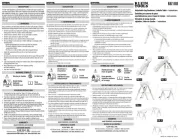
29 Juli 2025
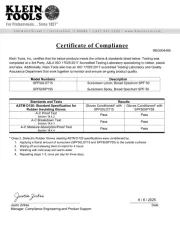
14 Juli 2025
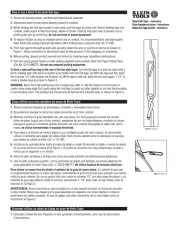
14 Juli 2025
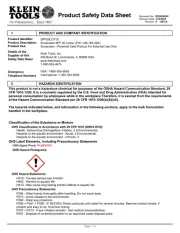
14 Juli 2025
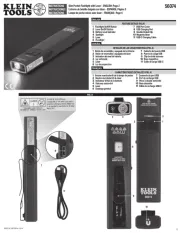
14 Juli 2025
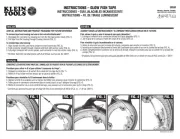
11 Juni 2025
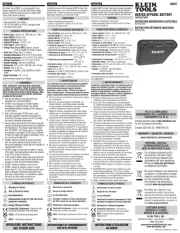
17 Maart 2025
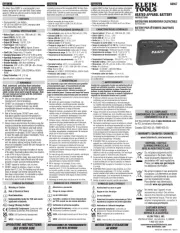
17 Maart 2025
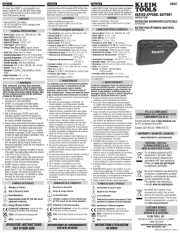
17 Maart 2025

17 Maart 2025
Handleiding Niet gecategoriseerd
- Laserworld
- Anex
- SLV
- SEADA
- Silva
- Rohl
- Atmotube
- BCA
- AYA
- B-Speech
- Thetford
- S.M.S.L
- Magnavox
- Motrona
- Copco
Nieuwste handleidingen voor Niet gecategoriseerd
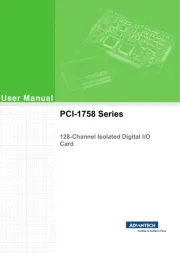
30 Juli 2025
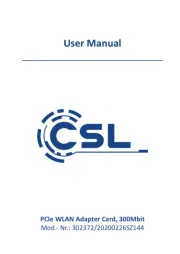
30 Juli 2025
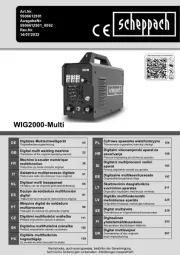
30 Juli 2025
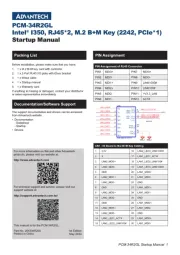
30 Juli 2025
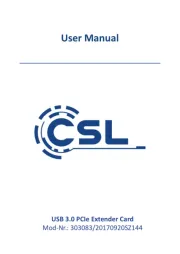
30 Juli 2025
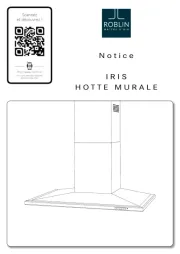
30 Juli 2025
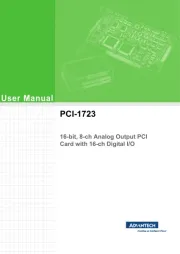
30 Juli 2025
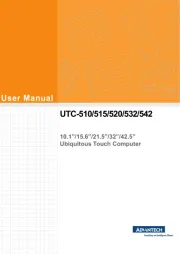
30 Juli 2025
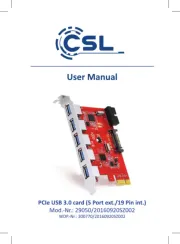
30 Juli 2025
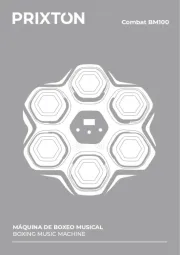
30 Juli 2025